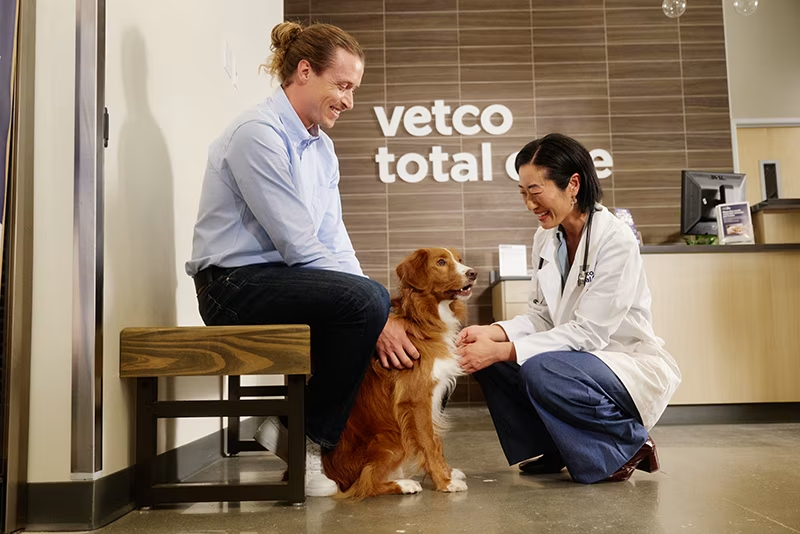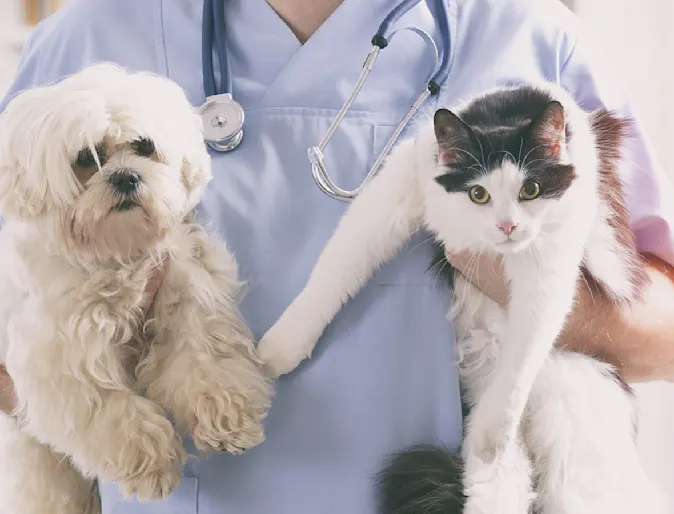Complete Breakdown of Services at animal emergency care bellingham Clinics
Complete Breakdown of Services at animal emergency care bellingham Clinics
Blog Article
All About Vet Surgical Treatment: Understanding the Significance of Expert Take Care Of Your Animals
Vet surgical procedure is a vital part of animal healthcare. It encompasses various procedures, from routine elective surgeries to immediate treatments. Recognizing the complexities of these surgical treatments can aid family pet owners make notified decisions. The prep work, execution, and recuperation phases are essential for ensuring the health of pets. With correct knowledge, owners can browse the intricacies of vet treatment. What elements should be taken into consideration before a pet undergoes surgical procedure?
Kinds Of Veterinarian Surgeries
When a pet dog requires surgical treatment, recognizing the various kinds of vet surgical treatments can help pet dog proprietors make notified choices. Vet surgical procedures can be generally categorized into 3 primary types: elective, urgent, and emergency situation surgical procedures. Optional surgical treatments, such as spaying or neutering, are planned treatments that are not quickly dangerous. Immediate surgical treatments, like those for foreign body removal, have to be carried out soon however are not life-threatening in the minute. Emergency situation surgeries, such as those dealing with severe trauma or inner blood loss, are important and require prompt attention.Additionally, surgical treatments can differ in intricacy, ranging from minimally intrusive laparoscopic treatments to a lot more substantial open surgeries. Each sort of surgical procedure brings its very own dangers and recovery procedures. Understanding these groups enables pet owners to participate in purposeful discussions with veterinarians, causing much better results for their precious pets.
Getting ready for Your Animal's Surgical treatment
Planning for a pet dog's surgical procedure includes a detailed checklist to ensure all basics are covered. Effective interaction with the veterinarian is important for recognizing the procedure and any kind of required pre-operative actions - emergency vet. Additionally, having clear post-operative care instructions will aid proprietors offer the very best assistance for their recovering animals
Pre-Surgery Checklist Essentials
Guaranteeing a smooth surgical experience for a family pet calls for mindful prep work and attention to detail. A pre-surgery list is essential for pet owners to follow. Initially, confirming the scheduled surgical procedure date and time is essential. Proprietors must likewise verify that their animal has actually not eaten according to the vet's directions, commonly for 8-12 hours prior to surgery. Gathering required medical documents, consisting of inoculation history, is crucial for the vet's evaluation. It is also suggested to prepare a comfy space in your home for the pet dog's recovery after surgical treatment. Lastly, proprietors need to have a prepare for transportation to and from the vet facility, making certain that the pet dog is secure and comfortable throughout the journey. Adhering to these actions can substantially enhance the surgical experience.
Interacting With Your Vet

Efficient interaction with the vet is necessary for a successful surgical experience for family pets. Owners ought to be prepared to review their pet's clinical history, including any pre-existing conditions, drugs, and allergic reactions. This info helps the vet evaluate risks and customize the medical strategy appropriately. Furthermore, family pet proprietors ought to ask inquiries concerning the procedure, anesthetic, and expected outcomes to guarantee they completely understand the procedure. Clarifying any doubts can alleviate anxiety for both the family pet and the owner. It is also crucial to communicate any type of behavioral adjustments or concerns observed in the animal leading up to the surgical procedure. Inevitably, clear dialogue promotes count on and partnership, making sure that family pets obtain the very best possible treatment during their medical trip.
Post-Operative Care Directions
After talking about the procedure with the veterinarian, pet owners ought to concentrate on post-operative care instructions to help with a smooth recuperation for their animals. These directions normally consist of keeping an eye on the surgical site for indications of infection, such as redness or discharge. Family pets may require to be kept calm and confined to stop too much activity that could disrupt recovery. Discomfort management is vital, so proprietors must follow the veterinarian's guidance on providing medicines. Furthermore, dietary limitations may be encouraged to avoid intestinal trouble. Normal follow-up appointments are important to ensure proper healing and resolve any problems. By adhering to these post-operative treatment instructions, pet proprietors can greatly add to their pet dog's recuperation and overall health.
The Surgical Refine Explained
The medical process for animals includes crucial actions that guarantee their safety and recuperation. Pre-surgery prep work are necessary for minimizing threats, while post-operative care standards play an important duty in advertising healing. Understanding these elements assists pet proprietors browse the surgical experience better.
Pre-Surgery Preparations
Before a pet undergoes surgery, several important preparations should take area to ensure a safe and effective procedure. A thorough vet examination is vital to examine the family pet's total health and identify any prospective risks. This may consist of blood examinations, imaging, or various other diagnostics. The vet will likewise review anesthesia alternatives customized to the family pet's specific needs. Additionally, pet owners are typically instructed to withhold food and water for a defined time prior to surgical treatment to lessen the danger of problems during anesthetic. It is very important for proprietors to offer a complete clinical background, consisting of any type of drugs or allergic reactions, making sure the medical group has all necessary details. Proper interaction and adherence to pre-surgery standards can considerably improve the outcome of the treatment.
Post-Operative Care Guidelines
Correct post-operative treatment is essential for guaranteeing a pet's recovery following surgery. After the procedure, pet dogs need to be monitored closely for any type of indicators of complications, such as too much bleeding, swelling, or uncommon behavior. It is necessary to adhere to the vet's directions regarding drugs, consisting of painkiller and antibiotics. Pet dogs should be kept in a quiet, comfy environment to reduce anxiety and promote healing. Restricting activity is vital; short, leashed strolls might be required, but leaping or running need to be stayed clear of. Regular follow-up consultations need to be scheduled to examine the recovery procedure. In addition, the medical site needs to be maintained clean and dry, with any indicators of exotic pet veterinarian infection reported to a veterinarian quickly. Sticking to these guidelines boosts recuperation outcomes.
Anesthetic and Discomfort Administration
Reliable anesthetic and pain monitoring are important elements of vet surgical treatment, making sure that pet dogs remain comfortable and risk-free throughout the treatment. Vets analyze each pet's specific requirements, thinking about aspects such as age, weight, health and wellness status, and the kind of surgical procedure being performed.Anesthesia procedures typically include a combination of pre-anesthetic medications, induction representatives, and inhalant anesthetics, allowing for exact control over the animal's degree of consciousness. Surveillance throughout surgical treatment is vital; veterinarians continuously observe important signs to resolve any kind of potential difficulties promptly.Pain administration approaches may entail opioids, non-steroidal anti-inflammatory medications (NSAIDs), and local anesthetics, customized to the pet dog's certain situation. This multifaceted click to read more technique assists minimize discomfort and advertises a smoother medical experience. By focusing on efficient anesthesia and discomfort management, veterinary professionals boost the overall welfare of pet dogs undergoing surgeries, ensuring they obtain the highest requirement of care.
Post-Operative Care and Recovery
Complying with surgical procedure, the focus moves to post-operative treatment and healing, which is crucial for guaranteeing a pet dog's safe go back to regular activities. During this duration, pets call for a quiet, comfy atmosphere to aid recovery. Proprietors must carefully check their family pets for any indicators of pain or unusual behavior.Veterinary guidelines commonly consist of details instructions connected to drug administration, wound treatment, and nutritional adjustments. It is important to stick to these referrals to decrease issues and advertise healing. Animals may need to be restricted from strenuous tasks, such as running or jumping, during their healing period (emergency vet near me).Regular follow-up visits with the veterinarian allow for monitoring of the pet dog's progression and timely changes to the treatment strategy. Offering psychological assistance and friendship can likewise improve a family pet's recuperation experience, aiding to ease stress and anxiety and stress and anxiety. Overall, persistent post-operative care plays a substantial function in attaining an effective recuperation
Acknowledging Difficulties After Surgery
Exactly how can animal proprietors determine issues after surgical treatment? Awareness of details signs is crucial for guaranteeing the wellness of pets during recovery. Common indicators consist of extreme swelling, inflammation, or discharge at the medical site, which may signify infection. Furthermore, persistent pain, shown by grumbling or unwillingness to move, must trigger immediate focus. Changes in hunger or water intake can also indicate issues; a decline in these behaviors might indicate discomfort or distress.Moreover, pet proprietors need additional hints to monitor their family pets for any kind of uncommon actions, such as sleepiness or problem breathing, as these can be signs of significant concerns. Vomiting or diarrhea complying with surgical treatment may require urgent vet examination. Acknowledging these complications early can greatly influence an animal's healing process, emphasizing the importance of caution and timely communication with a vet for any type of worrying signs.
The Role of Vet Specialists in Surgical Care
Vet professionals play an important function in making sure the security and success of procedures for family pets, specifically complying with surgical treatment when checking and care are extremely important. These experts consist of vets, vet specialists, and assistance team, every one of whom contribute specialized abilities to the medical process.Before surgical procedure, veterinarians perform detailed examinations to analyze the family pet's health, making certain that any underlying conditions are handled. During the procedure, the medical group gives anesthesia, maintains sterilized settings, and keeps track of essential indicators, very important for decreasing risks.Post-operative care is equally substantial; vet specialists observe for problems, manage pain, and guide owners on healing practices. Their experience allows them to acknowledge early indicators of distress or infection, guaranteeing timely treatment. Eventually, the collaborative initiatives of veterinary experts in medical treatment cultivate a safe atmosphere, advertising the wellness of pets throughout the surgical trip.

Often Asked Inquiries
Just how Do I Select the Right Vet Doctor for My Pet?
Choosing the appropriate vet cosmetic surgeon involves investigating qualifications, reviewing evaluations, and assessing the facility's atmosphere. It is vital to assess the cosmetic surgeon's experience with particular treatments and their interaction design when deciding.
What Prevail Misconceptions Concerning Vet Surgeries?
Typical mistaken beliefs concerning vet surgical treatments consist of beliefs that they are always dangerous, unnecessary, or just for emergency situations. Lots of family pet proprietors take too lightly the advantages of precautionary procedures and the skill associated with vet surgical treatment.
Just How Much Will My Animal's Surgical procedure Expense?
The cost of an animal's surgery can differ significantly based on factors such as the sort of procedure, the veterinarian's experience, and geographical place (24 hour vet near me). Usually, costs vary from a couple of hundred to a number of thousand dollars

Can My Pet Consume Before Surgical Procedure?
Before surgical treatment, it is generally recommended that family pets avoid from eating for a particular duration. This fasting helps minimize the threat of problems throughout anesthetic. Proprietors should consult their vet for accurate instructions customized to their family pet's requirements.
Suppose My Pet Has Pre-Existing Health Conditions?
When a family pet has pre-existing health problems, it's important for the veterinarian to examine these factors prior to surgical treatment. This analysis assurances proper preventative measures are taken, decreasing dangers and maximizing the animal's overall safety during the procedure.
Report this page